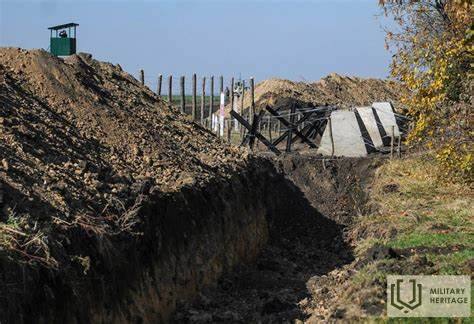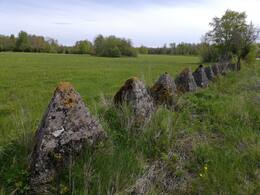Anti-tank fortification
I World War I, II World War II, IV Soviet Occupation
Fortification to protect against a tank attack and attacks of other motorised equipment.
The fortifications were either concrete or metal structures, barbed wire fences, anti-tank ditches or various types of earth ramparts.
Related objects
Tartu Anti-Tank Line – Jalaka Line
The Jalaka Line (named after the Chairman of the Executive Committee of Tartu, Kristjan Jalak) was an anti-tank trench dug alongside the Riga road near the village of Räni four kilometres outside of Tartu in summer 1941 as a countermeasure against the German offensive.
Part of the line is situated in Lemmatsi, another village outside of Tartu by the E264 towards Valga. The other part was established on the right bank of the Emajõgi River stretching from Kärevere to Praaga.
Citizens of Tartu aged 16-55, men and women alike, were forced by the Soviet regime to construct the fortifications for the Jalaka Line. The German regime used the trenches in 1941 and 1942 to execute those in its Tartu concentration camp who had been sentenced to death. During the Soviet era a monument was erected, designed by Elmar Rebase and Väino Tamm, in memory of the victims of terror.
Lõpe-Kaimri Anti-Tank Line
On 16 September 1941, Soviet forces launched the construction of the Lõpe-Kaimri antitank line to halt the German advance. It runs from west to east in the southern part of the isthmus of Sõrve Peninsula, which is just 3.2 km wide at this point. Comprising two rows of concrete pyramids stretching 900 metres from Lõu Bay to the village of Teesu, the antitank line is in good condition. It is made up of two rows of pyramids standing 0.8 metres high and spaced one metre apart. Parts of the fairly well preserved antitank line have gaps in them, indicating points at which the enemy broke through. The site is easily accessible and can be clearly seen from the road running down the western side of the isthmus. The line is the site of a monument unveiled in 1969, depicting a tall concrete pyramid, which reads: “Lõpe-Kaimri antitank line, built in 1941”.
Related stories
Forced Labour on the Jalaka Line
How anti-tank trenches were dug on the Jalaka line to protect against the German offensive in the summer of 1941.









